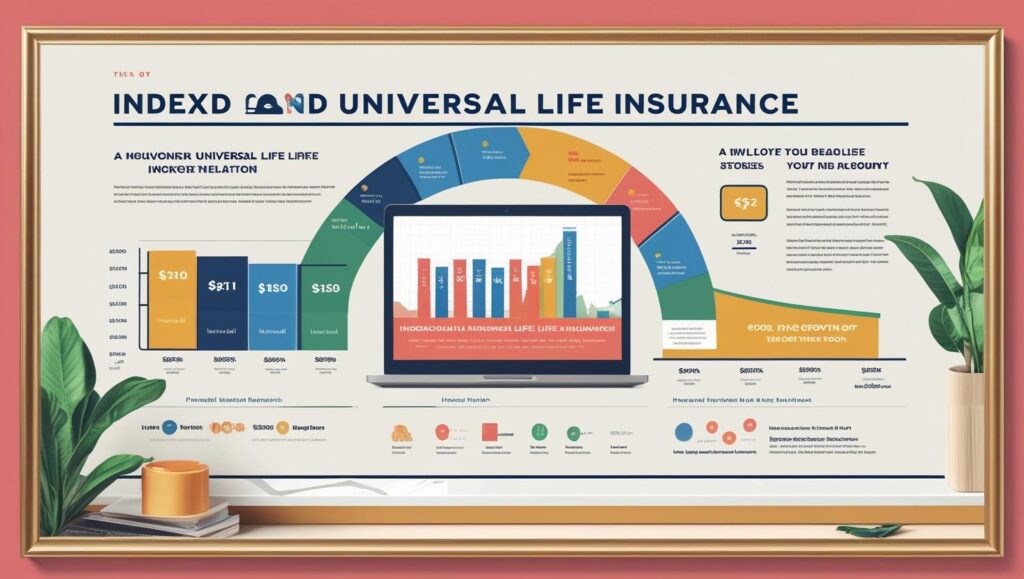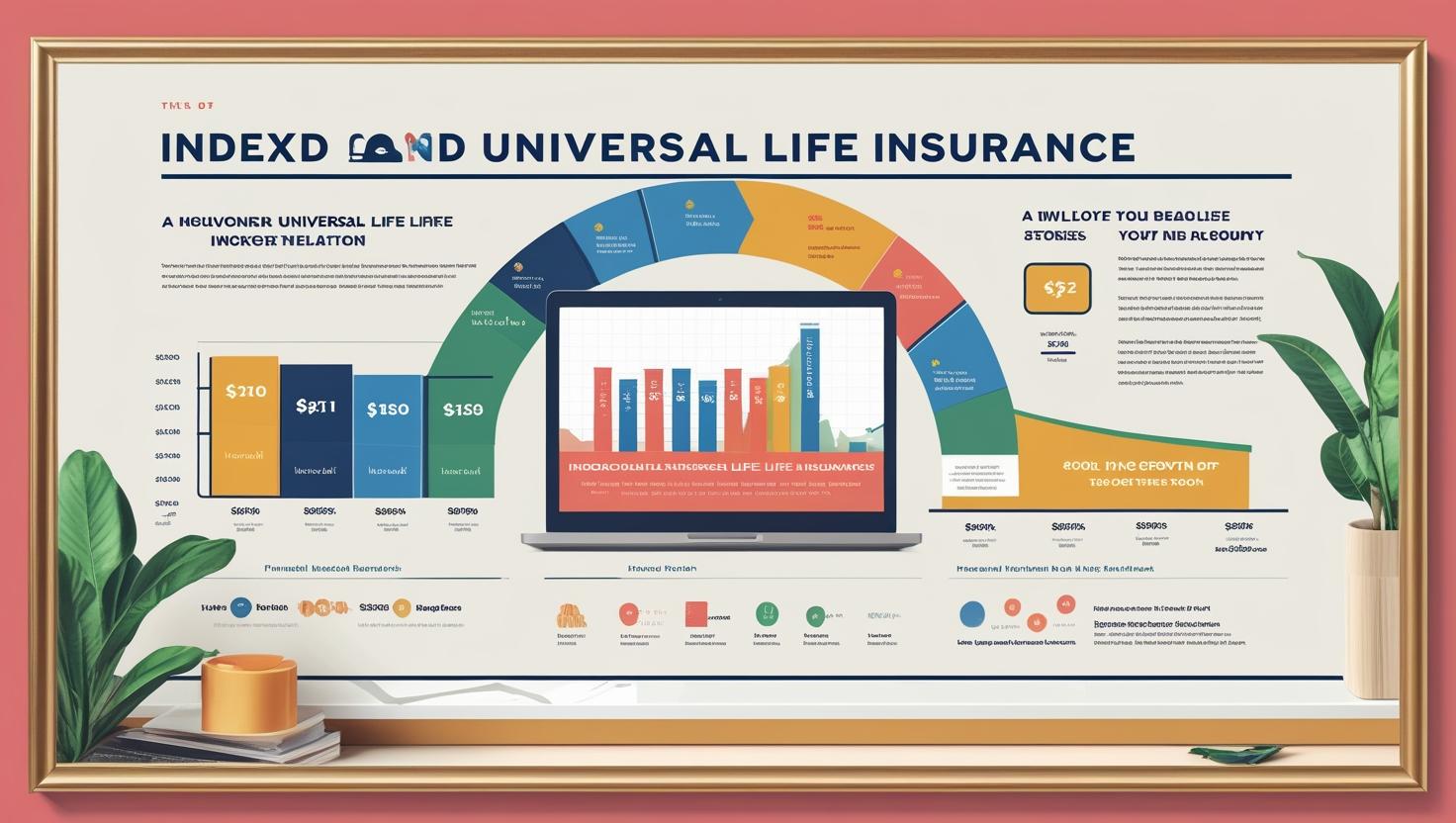
Introduction
Indexed Universal Life Insurance (IUL) insurance is a type of permanent life insurance that combines a death benefit with a cash value component tied to a stock market index, such as the S&P 500. Unlike traditional universal life policies, which offer fixed or variable interest rates in the policy, IUL provides the potential for higher returns based on market fluctuation performance while protecting against losses.
This blog will explore how IUL works, its benefits, drawbacks, and key considerations to help you determine if it’s the right financial tool for your needs in future decisions.
What Is Indexed Universal Life Insurance?
Indexed Universal Life Insurance is a flexible permanent life insurance policy that offers:
- Death Benefit: A tax-free payout to nominees upon the policyholder’s death.
- Cash Value Growth: A savings component that earns interest based on the fluctuation of a market index (e.g., S&P 500, Nasdaq).
- Protection from Market Losses: Unlike direct stock investments, IUL policies typically have a floor (often 0%), meaning you won’t lose money due to market downturns at the time.
- Flexible Premiums: Policyholders can adjust premium payments within certain limits.
How Does Indexed Universal Life Insurance Work?
- Premium Payments
- A portion of your premium goes toward the insurance cost, administrative fees, and cash value.
- You can often adjust premium amounts (within limits) based on financial circumstances.
- Cash Value Growth
- The cash value is credited interest based on the performance of a selected stock index.
- Most policies have a cap rate (maximum return) and a floor (minimum return, often 0%).
- Some policies offer a fixed interest option as an alternative to index-linked growth.
- Death Benefit Payout
- Nominees receive a tax-free death benefit when the insured dies.
- The payout can be a fixed amount or can increase if the cash value grows significantly.
- Policy Loans & Withdrawals
- You can borrow against the cash value tax-free (though loans reduce the death benefit if unpaid).
- Withdrawals up to the amount paid in premiums are typically tax-free.
Advantages of Indexed Universal Life Insurance

1. Market-Linked Growth with Downside Protection
- Potential for higher returns than traditional universal life policies.
- No direct risk of market losses due to the 0% floor.
2. Tax Advantages
- Tax-deferred growth: Cash value grows without annual tax liability.
- Tax-free death benefit: Nominees receive funds without income tax.
- Tax-free loans & withdrawals: Access cash value without triggering taxes (if structured correctly).
3. Flexible Premiums & Adjustable Coverage
- Adjust premiums based on financial changes (subject to policy terms).
- Increase or decrease death benefit as needed (may require underwriting).
4. Supplemental Retirement Income
- Policyholders can use cash value for retirement via loans or withdrawals.
- Unlike 401(k)s or IRAs, there are no required minimum distributions (RMDs).
5. Estate Planning & Wealth Transfer
- Death benefits bypass probate and go directly to nominees.
- Can be structured to minimize estate taxes for high-net-worth individuals.
Disadvantages of Indexed Universal Life Insurance
1. Complexity & Fees
- Higher fees than term life insurance (mortality charges, administrative fees, rider costs).
- Caps and participation rates can limit returns compared to direct stock investments.
2. Risk of Lapse
- If cash value doesn’t grow as expected or premiums are underfunded, the policy could lapse.
- A lapsed policy may trigger taxes on gains.
3. Lower Returns Than Direct Investing
- Due to caps and participation rates, Indexed Universal Life Insurance may underperform the stock market over time.
- Not ideal for aggressive investors seeking maximum growth.
4. Long-Term Commitment
- Indexed Universal Life Insurance works best when held for decades; surrendering early can result in losses in policy.
Key Features to Consider
1. Cap Rates & Participation Rates
- Cap Rate: The maximum interest you can earn in a given period (e.g., 10%).
- Participation Rate: The percentage of index gains credited to your cash value (e.g., 80%).
2. Floor Rate
- Most IUL policies guarantee a 0% floor, meaning no losses in the down markets index.
3. Premium Flexibility
- Ensure the policy allows adjustments if your financial situation changes.
4. Riders & Additional Benefits
- Accelerated Death Benefit: Access funds if diagnosed with a terminal illness.
- Waiver of Premium: Suspends payments if disabled.
- Long-Term Care Rider: Uses death benefit for long-term care expenses.
Who Should Consider an Indexed Universal Life Insurance Policy?
1. High-Income Earners Seeking Tax Advantages
- Those in higher tax brackets benefit from tax-deferred growth and tax-free distributions.
2. Individuals Wanting Market-Linked Growth with Safety
- Investors who want upside potential without direct market risk.
3. Estate Planners & Business Owners
- Useful for wealth transfer, business succession, or charitable giving.
4. Those Needing Permanent Coverage
- Unlike term life, IUL lasts a lifetime if premiums are maintained.
Alternatives to Indexed Universal Life Insurance
Option Pros Cons
Term Life Insurance Low cost, simple No cash value, expires
Whole Life Insurance Guaranteed growth Lower returns, rigid premiums
Variable Universal Life (VUL) Higher growth potential Market risk, higher fees
Roth IRA / 401(k) Tax-free withdrawals in retirement Contribution limits, market risk
Final Thoughts: Is Indexed Universal Life Insurance Right for You?
Indexed Universal Life can be a powerful financial pain for the right person. It offers a unique blend of life insurance protection, tax advantages, and market-linked growth with downside protection. However, its complexity, fees, and long-term nature mean it’s not suitable for everyone.
Before Buying an Indexed Universal Life Insurance Policy:
Compare multiple insurers (cap rates, fees, financial strength).
Consult a financial advisor to assess fit with your goals.
Ensure you can commit to long-term premium payments.
If structured correctly, an IUL policy can provide lifelong coverage, supplemental retirement income, and a tax-advantaged wealth transfer strategy. However, if you prioritize simplicity or maximum investment growth, other options may be more suitable.
Next Steps
- Request illustrations from insurers to see projected growth.
- Review your overall financial plan to see where IUL fits.
- Speak with a licensed agent specializing in life insurance.
Would you like help analyzing a specific IUL policy? Let me know in the comments!
Disclaimer: This blog is for informational purposes only and not financial advice. Consult a licensed professional before making insurance or investment decisions.

No Responses